Nanotechnology, once a concept confined to the pages of science fiction, has become a transformative force across multiple industries. Its potential to manipulate matter at the molecular and atomic levels has opened up unprecedented possibilities. As we advance into a new era of scientific breakthroughs, the nanotechnology future promises innovations that could redefine medicine, energy, manufacturing, and even space exploration. This article delves into some of the most exciting nanotechnology innovations and highlights the key benefits this field will bring to society.
The Evolution of Nanotechnology
Nanotechnology, by definition, refers to the manipulation of materials at the nanoscale, typically less than 100 nanometers. To put that in perspective, one nanometer is one-billionth of a meter. While the concept of nanotechnology can be traced back to physicist Richard Feynman’s 1959 lecture titled “There’s Plenty of Room at the Bottom,” the field began to take tangible shape in the 1980s with the development of scanning tunneling microscopy (STM) and atomic force microscopy (AFM). These innovations allowed scientists to observe and manipulate atoms and molecules directly.
Fast forward to the 21st century, and nanotechnology has progressed exponentially. From consumer electronics to biomedicine, nanotechnology innovation has touched nearly every sector, and its potential is far from exhausted.
Nanotechnology in Medicine: A New Frontier
The future of nanotechnology in medicine is arguably one of the most exciting and impactful areas of research. Nanomedicine uses nanoscale materials to diagnose, treat, and even prevent diseases at a level previously unimaginable.
Drug Delivery Systems
One of the most prominent nanotechnology benefits is in the field of drug delivery. Nanoparticles can be engineered to deliver drugs with precision to specific cells or tissues, significantly improving the efficacy of treatments while minimizing side effects. For instance, cancer therapies often harm healthy cells, leading to debilitating side effects. Nanoparticles can be designed to target only cancer cells, sparing healthy tissue and improving patient outcomes.
According to a 2021 report from Grand View Research, the global nanomedicine market was valued at $177.8 billion and is expected to grow at a compound annual growth rate (CAGR) of 12.1% from 2022 to 2030. This growth is largely driven by innovations in drug delivery systems, imaging, and regenerative medicine.
Nanobots in Surgery
Another emerging area is the use of nanobots for non-invasive surgery. These microscopic machines could be programmed to repair tissues, remove blockages, or even destroy cancer cells without the need for traditional surgical procedures. Researchers are already experimenting with nanobots that can swim through the bloodstream, powered by magnetic fields, to perform precise medical tasks.
The potential of nanobots in surgery extends beyond simple repairs. Scientists believe that these bots could eventually perform complex tasks such as DNA editing or tissue regeneration, fundamentally transforming how we treat genetic disorders or severe injuries.
Energy Solutions Powered by Nanotechnology
Another critical area where nanotechnology innovation is poised to make a difference is in energy. With the global push towards renewable energy sources, nanotechnology could be the key to making these sources more efficient and sustainable.
Solar Power Efficiency
Nanotechnology can enhance the efficiency of solar cells, one of the most promising sources of renewable energy. Traditional solar cells capture only a portion of the sun’s energy, but with nanomaterials, solar panels can absorb a broader spectrum of light. Quantum dots, a type of nanoparticle, have shown promise in improving the efficiency of solar cells, potentially boosting their energy conversion rates by 30% or more.
A report by the International Energy Agency (IEA) projected that by 2050, nanotechnology could contribute to increasing the efficiency of solar cells by up to 50%. This would make solar energy far more competitive with fossil fuels, accelerating the transition to cleaner energy sources.
Energy Storage and Batteries
Nanotechnology is also making strides in energy storage. Current battery technology, while improving, still faces limitations in terms of energy density, charging speed, and lifespan. Nanomaterials, such as graphene, are being explored for their potential to create more efficient and longer-lasting batteries.
Graphene-based batteries, for example, could charge faster and store more energy than today’s lithium-ion batteries. This would not only revolutionize consumer electronics but also make electric vehicles (EVs) more viable by extending their range and reducing charging times.
Manufacturing and Materials: Stronger, Lighter, and Smarter
In the realm of manufacturing, nanotechnology innovation is leading to the development of stronger, lighter, and more durable materials. Nanomaterials are already being used to create everything from stain-resistant fabrics to ultra-strong composites used in aerospace engineering.
Carbon Nanotubes and Graphene
Carbon nanotubes, cylindrical molecules made of carbon atoms, are one of the most studied nanomaterials. They are incredibly strong—about 100 times stronger than steel—yet lightweight, making them ideal for use in various industries, including aerospace, automotive, and construction.
Graphene, a single layer of carbon atoms arranged in a two-dimensional lattice, is another revolutionary material. It is known for its exceptional electrical conductivity, strength, and flexibility. Researchers believe that graphene could be used to develop everything from flexible electronics to super-efficient energy storage devices.
3D Printing with Nanomaterials
Another exciting area of nanotechnology innovation in manufacturing is 3D printing. By incorporating nanomaterials into 3D printing processes, manufacturers can create products that are not only lightweight but also possess enhanced properties, such as increased thermal resistance or improved conductivity.
This combination of 3D printing and nanotechnology is expected to revolutionize industries such as automotive and aerospace, where reducing weight without sacrificing strength is crucial for fuel efficiency and performance.

Environmental and Societal Benefits of Nanotechnology
Beyond industry-specific applications, nanotechnology benefits society by addressing some of the most pressing environmental challenges. Nanotechnology can contribute to cleaner water, improved air quality, and more sustainable agricultural practices.
Water Purification
One of the most promising applications of nanotechnology is in water purification. Nanomaterials can be used to remove contaminants, such as heavy metals and bacteria, from water sources. For instance, researchers are exploring the use of nanomembranes for desalination, which could help address global water scarcity by making seawater drinkable in an energy-efficient manner.
Air Pollution Control
Nanotechnology is also being used to develop materials that can capture and neutralize harmful air pollutants. For example, nanocatalysts can break down toxic gases such as carbon monoxide and nitrogen oxides, contributing to cleaner air in urban areas.
Conclusion: The Future of Nanotechnology
The nanotechnology future holds immense potential to revolutionize nearly every aspect of human life, from medicine to energy to environmental sustainability. As research continues to advance, we can expect to see even more groundbreaking nanotechnology innovations that will reshape industries and improve the quality of life for people worldwide. While challenges remain, particularly in terms of regulatory oversight and potential environmental impacts, the benefits of nanotechnology far outweigh the risks, making it one of the most promising fields of the 21st century.
The nanotechnology benefits we’ve explored in this article are only the beginning. As the field continues to grow, so too will its impact on society, driving us towards a future where science fiction becomes reality.
Discover the future of innovation with NanoHempTechLabs! Our cutting-edge nanotechnology products are revolutionizing industries like healthcare, energy, and manufacturing. From advanced drug delivery systems to high-efficiency solar solutions and durable nanomaterials, our wholesale offerings ensure your business stays ahead of the curve. At NanoHempTechLabs, we deliver top-tier nanotechnology innovations that improve performance, sustainability, and efficiency. Partner with us to harness the immense potential of nanotechnology and transform your product lineup. Ready to elevate your business? Schedule a call today with our team of experts and explore our exclusive wholesale opportunities!
Reference:
- (2023). Nanotechnology based drug delivery system current status and future prospects. International Research Journal of Modernization in Engineering Technology and Science. https://doi.org/10.56726/irjmets39424
- Alp, E., Çırak, T., Demirbilek, M., Türk, M., & Güven, E. (2017). Targeted delivery of etoposide to osteosarcoma cells using poly(3-hydroxybutyrate-co-3-hydroxyvalerate) (phbv) nanoparticles. Turkish Journal of Biology, 41, 719-733. https://doi.org/10.3906/biy-1612-17
Baydar, S. (2024). Frontiers of stem cell engineering for nanotechnology-mediated drug delivery systems. Admet & DMPK. https://doi.org/10.5599/admet.2160 Demetzos, C. and Pippa, Ν. (2013). Advanced drug delivery nanosystems (addnss): a mini-review. Drug Delivery, 21(4), 250-257. https://doi.org/10.3109/10717544.2013.844745





